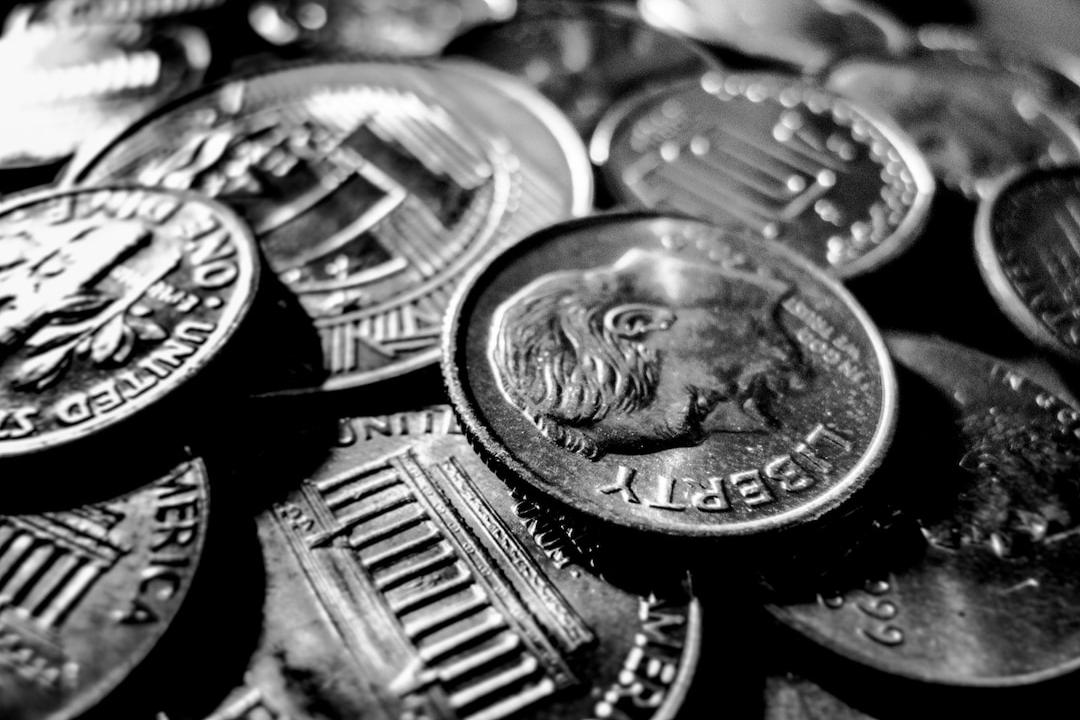Why can Bitcoin reach $100,000 each? Why is $100,000 still just the beginning for Bitcoin?
Bitcoin breaking through $100,000 may just be the beginning.
At 10:00 on December 5, 2024, Bitcoin officially broke through $100,000.
In the past year, BTC has more than doubled; in three years, BTC has nearly sextupled; in five years, BTC has nearly increased 20 times; in ten years, BTC has increased 500 times, and in fifteen years, starting from Bitcoin Pizza Day, BTC has increased by 40 million times… For sixteen years, Bitcoin has always been at a new starting point.
Over the sixteen years, Bitcoin has been attacked by various governments and then gradually accepted and even openly supported by various governments, questioned by the public time and time again, and then held by more and more people. In 2024, the number of users of the cryptocurrency exchange Binance alone exceeded 210 million. Every time people think Bitcoin has reached its peak, almost at the end, but each time it is proven to be just a new starting point.
The narrative and significance of Bitcoin itself are also constantly evolving, and people’s views on Bitcoin have been changing.
Fifteen years ago, it was just a small experiment by cryptographers, where a programmer in Florida, USA, used 10,000 bitcoins to buy two pizzas; ten years ago, it was just a payment method that provided a hotbed for gambling, drugs, money laundering, and other illegal transactions, with most of its use cases being illegal transactions; five years ago, along with the cryptocurrency industry, it gradually grew into a new financial system, difficult to describe accurately, with “Cryptocurrency Nasdaq” (Ethereum), “Cryptocurrency Bank” (Tether, Ethena), “Cryptocurrency Securities Company” (Binance), account systems (Metamask)… Each product has tens of millions or even billions of users, it has almost all the infrastructure and products of the traditional financial industry, but more efficient, more streamlined, more transparent, more decentralized, and more globalized; three years ago, the cryptocurrency industry no longer limited to financial scenarios, but expanded to Web3 application scenarios, so the next-generation financial system + the next-generation Internet system became its new mission.
Now, more people believe that Bitcoin is digital gold. The market value of Bitcoin has reached $2 trillion, surpassing the market value of silver and being one-tenth of the market value of gold. Bitcoin has been recognized and supported by sovereign countries such as the United States and Japan. And this process, Bitcoin only took sixteen years. What is even more astonishing is that the blockchain technology behind Bitcoin has spawned a whole new set of financial and internet ecosystems, and the thousands or even tens of thousands of crypto institutions on these two ecosystems continue to drive the popularization of Bitcoin, making it truly possible to become a global currency.
When Bitcoin reaches $100,000, everyone raised a common question: Is Bitcoin close to the end? How far is Bitcoin from the end? Will Bitcoin have a new narrative?
5 billion internet users have not yet touched Bitcoin
$100,000 is still the beginning for Bitcoin, and this time Bitcoin will welcome new “buyers”.
This year’s largest new buyers are undoubtedly the world’s largest fund BlackRock and other institutional buyers behind BlackRock – U.S. corporations and institutions.
In January 2024, the United States passed the BTC ETF, which means that U.S. listed companies, pensions, BlackRock funds, Stanford University and other university funds, and other institutions can publicly purchase and hold Bitcoin through the ETF issued by BlackRock and other funds. The approval of the U.S. Bitcoin ETF has triggered a wave of large institutions in the United States buying Bitcoin, with global large companies rushing to buy Bitcoin, with $100 billion flowing into the BTC ETF in 10 months, almost $10 billion every month purchased through U.S. fund companies.
Bitcoin also surged from over $40,000 to $100,000, largely due to the approval of the U.S. BTC ETF, allowing U.S. institutions to buy Bitcoin through legitimate channels such as ETF. The approval of the U.S. BTC ETF and the subsequent 10 months of performance have become a miracle in ETF history.
And if Bitcoin rises from $100,000 to $200,000, what new buyers will enter?
First of all, from an institutional perspective, the institutions currently buying Bitcoin are still mainly in the United States. The U.S. Bitcoin spot ETF is still rapidly attracting funds of tens of billions of dollars every month, with no signs of stopping, and U.S. and global companies and institutions will still buy Bitcoin through the Bitcoin spot ETF.
From a global perspective, major economies such as Japan, Europe, and China have not completely lifted restrictions on institutional purchases. Once major economies relax restrictions, it will be another leap. According to the famous “time principle”, innovative assets and mechanisms tend to move from the United States to developed countries and finally to developing countries. Whether in the field of assets and finance: gold, Nasdaq listing mechanism, SPAC listing mechanism, or in the field of pan-technology: the internet, chips, mobile phones, new energy vehicles, they often follow the time principle.
Secondly, from the perspective of ordinary people, the popularity of Bitcoin is still far from enough. According to estimates by the well-known Silicon Valley investment institution a16z through various methods, the current global monthly active cryptocurrency users range from 30 million to 60 million. Even if this range is expanded to include users who have held cryptocurrencies, according to Crypto.com’s analysis in April 2024, there are 610 million cryptocurrency users worldwide. With a global population of 8.2 billion, of which 5.4 billion use the internet, about 5 billion internet users have not experienced cryptocurrency products.
The cryptocurrency industry hopes to establish a global new financial system and internet system, allowing everyone to use cryptocurrency products just like internet products. In 2024, there are 5.4 billion people using the internet, but only 610 million cryptocurrency users, representing a huge incremental market. And the cryptocurrency industry is changing this situation, changing the financial system and internet system.
When the cryptocurrency industry becomes as popular as the internet industry is now, Bitcoin will reach ten times the current population.
Finally, there is another more critical buyer: sovereign countries.
After El Salvador, Bitcoin is expected to become the reserve asset of more and more sovereign countries. Especially after Trump was elected president of the United States, major economies such as China, the United States, Japan, Europe, and the United Arab Emirates are expected to accelerate the adoption of Bitcoin as a national reserve asset, which will lead Bitcoin to another leap.
Big countries directly buying Bitcoin is not groundless. On November 22, Reuters reported that Trump’s “Cryptocurrency Advisory Committee” is expected to establish a committed Bitcoin reserve.
Trump has openly supported Bitcoin and the cryptocurrency industry multiple times. During his campaign, Trump promised several measures to support the cryptocurrency industry, such as including Bitcoin in the national reserves, making the United States the world’s cryptocurrency capital, and relaxing regulations. Trump’s proposals have received support from some political and industry experts. For example, U.S. Senator Cynthia Lummis has proposed a bill to establish a strategic Bitcoin reserve, with the goal of acquiring 1 million BTC within five years and holding them for at least 20 years to hedge against U.S. national debt.
When the United States holds Bitcoin as a reserve, most countries around the world are also expected to allocate a corresponding proportion of Bitcoin assets, just like gold.
In conclusion, whether it’s the 5 billion internet users, the $100 billion per month continuously flowing into the Bitcoin spot ETF mainly bought by institutions, or sovereign countries’ funds, they are all potential buyers of Bitcoin and the key “buyers” for Bitcoin to rise from $100,000 to $200,000.
$100,000, just the beginning
$100,000 is just the beginning for Bitcoin. If Bitcoin wants to rise from $100,000 to $200,000, it not only needs new buyers but also needs a new group of believers and builders to expand Bitcoin’s reach network.
Cryptocurrency practitioners may be one of the most exploratory groups in the world.
They need to understand the development of various blockchain technologies such as ZK, as well as new trends in technologies in various industries such as AI, VR, and the metaverse; they need to delve into U.S. politics and elections, the timing and extent of U.S. Federal Reserve interest rate cuts, cryptocurrency policies in Hong Kong and Singapore, and always pay attention to various macro events such as wars, economic crises, and stock market fluctuations; they need to understand the differences between public chains such as Bitcoin, Ethereum, Solana, Sui, and Base, as well as be knowledgeable about Web3 social, Web3 games, DeFi, NFT concepts and tracks.
From ICOs to DeFi, to NFTs, to the current Mass Adoption, cryptocurrency practitioners are constantly expanding the boundaries of the blockchain network, enabling assets such as Bitcoin to circulate globally and create value.
Many people ask, what is the significance of Bitcoin and cryptocurrencies? Why do so many people join the cryptocurrency industry?
I often answer, when the value of Argentina’s national currency shrinks by more than 50% every year, companies like Binance and Tether provide stablecoins for Argentinians, protecting their assets from significant shrinkage, which is the significance of Bitcoin’s existence; when people want to transfer money to their cross-border family and friends, but the traditional economic and political systems have set up obstacles, requiring high fees and long waiting times, this is the significance of Bitcoin’s existence; when as a startup founder, it is difficult to collaborate low-costly directly with employees from several or even dozens of different currency systems in different countries within the existing system, this is the significance of Bitcoin, cryptocurrencies, and blockchain’s existence.
Bitcoin creates value and is constantly exploring new possibilities for creating value, from building a new financial system to building a new internet system. This road is just a small part completed, and the new builders still have a long way to go.
In conclusion
During the Republic of China era, the first thing university professors did when they received their wages was to run to the rice store to buy rice, because the price would rise again if they were even an hour late.
Such things are happening all the time, in every corner of the world. Some countries have milder symptoms, such as China, Japan, and the United States, some countries have more severe symptoms, such as Argentina, and some countries are at risk of worsening symptoms at any time, such as Russia and Ukraine.
Everyone has good and bad sides, and the existence of a country has good and bad sides.
The appearance of the internet has made it impossible for most countries to block information at will, countering the evil side of countries; the appearance of Bitcoin has made it impossible for most countries to issue currency at will, countering the evil side of countries.
And countries cannot stop Bitcoin, because Bitcoin is just a technology, a tool. As Russian President Putin said at the Russia Calling forum on December 4, “Who can ban Bitcoin? No one can. Who can ban the use of other electronic payment methods? No one can. Because these are all new technologies.”
This is why Bitcoin can reach $100,000 each.
This is also why it is said that $100,000 is still just the beginning for Bitcoin.


